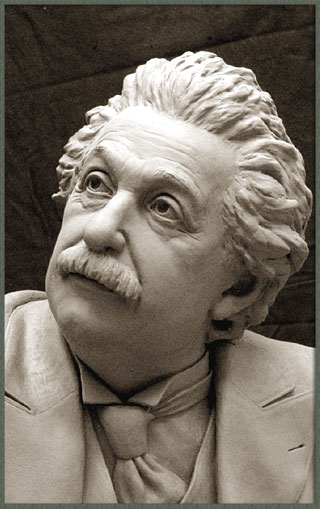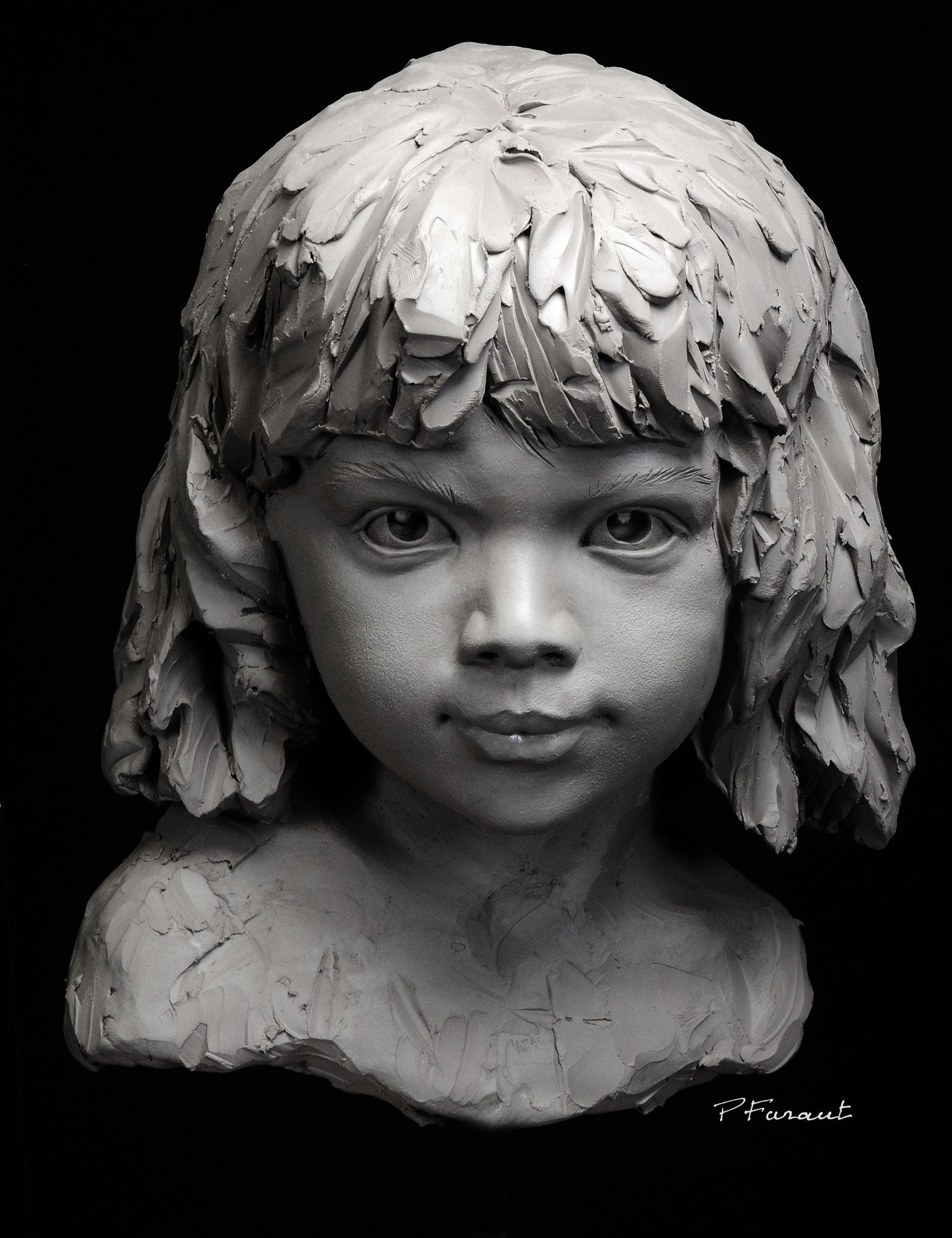The Impact of Nature in Sculpture Art
The impact of nature in sculpture art is a topic that has mesmerized artists throughout background. Significance of all-natural aspects is another means in which nature affects sculpture, as artists imbue their productions with the meaning and organizations intrinsic in these elements - Figurative Sculptures. Ultimately, sculpture art has the power to capture the transience of nature, freezing a moment in time and allowing us to value its elegance in eternity.
Organic Kinds and Shapes
Organic shapes and types, influenced by the harmonious structures and intricate patterns discovered in nature, play a crucial duty in the world of sculpture art. Carvers have long been captivated by the charm and complexity of the natural world, finding ideas in the elegant curves of a seashell, the delicate petals of a flower, or the twisting branches of a tree. By copying and extracting these organic forms, musicians have the ability to produce sculptures that stimulate a sense of harmony and equilibrium.
Among the reasons natural types and shapes are so prevalent in sculpture art is their capability to link with visitors on a deep psychological level. The environment is familiar to us all, and when we see these forms stood for in art, it elicits a feeling of comfort and recognition. It reminds us of our area in the grand plan of points and enables us to connect with something more than ourselves.
Moreover, organic kinds and shapes in sculpture art commonly embody a feeling of motion and energy. The streaming lines and dynamic structures mimic the consistent motion and development discovered in nature. This creates a feeling of vitality and brings sculptures to life, making them look like if they could continue to change and advance before our eyes.
Appearance and Material Expedition
A significant element of sculpture art affected by nature is the expedition of appearance and materials via the use of different strategies and tools. Artists commonly draw motivation from the varied textures discovered in the all-natural world, such as the rough bark of a tree, the smooth surface area of a stone, or the elaborate patterns on a fallen leave. By incorporating these structures right into their work, carvers can develop a tactile experience for audiences, welcoming them to involve with the art work on a sensory level.
Appearance can be attained in sculpture with a range of approaches. Some artists select to carve or sculpt directly right into the picked product, creating a three-dimensional surface that resembles the textures discovered in nature. Others might use strategies such as molding or casting to record the information of organic structures. In addition, musicians might experiment with different materials, such as wood, stone, clay, or metal, each providing its own special structure and aesthetic charm.
Material expedition is likewise a substantial component of sculpture art affected by nature. They might incorporate natural elements like branches, leaves, or also dirt into their sculptures, obscuring the boundaries between art and the setting.
Symbolism of Natural Environments
The consolidation of natural environments in sculpture art includes a layer of importance and deepness to the art work. By utilizing products located in nature, carvers have the ability to imbue their developments with definition that resonates with audiences on a profound degree. All-natural components such as timber, stone, and plants have been used throughout background to communicate numerous symbolic messages.
Sculptures crafted from this material can stimulate a feeling of connection to the earth and the cycles of life. Sculptures carved from stone can represent the ageless nature of specific concepts or ideas.
Plants and flowers are additionally frequently integrated into sculpture art, representing themes of growth, renewal, and elegance. The fragile flowers and dynamic colors of blossoms can stimulate feelings of pleasure, while the linking branches of plants can symbolize interconnectedness and unity.
Along with these natural materials, artists may also make use of natural components such as wind, fire, or water to better enhance the symbolic message of their art work. These aspects can stand for the transformative power of nature, the flow of time, or the pressures that shape our world.

Representations of the Environment
Reflections of the Setting can be seen in sculpture art with the incorporation of all-natural elements and the portrayal of eco-friendly themes. Carvers usually draw ideas from the environment, utilizing products such as timber, stone, or also recycled products to produce their art work. By using these natural aspects, they not just admire the atmosphere yet additionally produce a more powerful link between the artwork and its surroundings.
Along with the products used, sculpture art also shows the setting with the representation of eco-friendly themes. Numerous carvers choose to depict animals, plants, or landscapes in their work, highlighting the appeal and frailty of the environment. These sculptures work as reminders of the importance of maintaining our atmosphere and the requirement for lasting practices.

In addition, environmental sculptures often aim to increase recognition concerning pushing environmental problems. They work as visual depictions of the impact of human activities on the atmosphere, such as logging, contamination, or environment adjustment. By portraying these problems in their artwork, artists wish to influence viewers to take activity and end up being much more aware of their own ecological impact.
Catching the Transience of Nature
Sculpture artists additionally check out the impact of nature by skillfully capturing the ever-changing and ephemeral aspects of the environment. Through their virtuosity, these musicians intend to show the fleeting charm and transience of nature, stimulating a sense of marvel and consideration in audiences.
One method which sculpture musicians capture the transience of nature is by using products that are themselves subject to degeneration and change. Musicians might pick to work with natural products such as leaves, flowers, or timber, which naturally degrade over time. This purposeful selection highlights the impermanence of nature and reminds us of the inevitable cycle of life and death.
Furthermore, sculpture musicians usually use strategies that create a sense of motion and fluidness in their job. By incorporating streaming lines and vibrant kinds, they convey the ever-changing nature of the natural globe. This can be seen in sculptures motivated by wind, water, or the growth of plants, where the artist looks for to capture the significance of consistent motion and change.
Moreover, some musicians pick to develop short-lived or site-specific installations that interact with the setting. These ephemeral sculptures, made from products such as sand, ice, or light, are purposefully made to gradually alter or vanish in time. By embracing the transient nature of their creations, artists invite audiences to assess the fleeting charm of the environment and the impermanence of human existence.

Verdict
To conclude, nature has a profound influence on sculpture art. With the usage of natural forms and forms, artists are able to stimulate a feeling of all-natural elegance and consistency. Appearance and product exploration even more improve the link to nature, as musicians usually incorporate natural products right into their sculptures. Meaning of natural environments adds depth and implying to the artwork, a knockout post while reflections of the environment capture the essence of nature. Ultimately, sculpture art captures the transience of nature and celebrates its everlasting impact.
Importance of natural components is another method in which nature affects sculpture, as artists imbue their developments with the definition and associations intrinsic in these components.A significant facet of sculpture art affected by nature is the exploration of structure and products via the use of different methods and tools (Bronze Sculptures).Product exploration is likewise a considerable component of sculpture art affected by nature.One means in which sculpture artists capture the transience of nature is by using products that are themselves subject to degeneration and change. Texture and material exploration additionally boost the link to nature, as musicians frequently integrate natural materials right into their sculptures